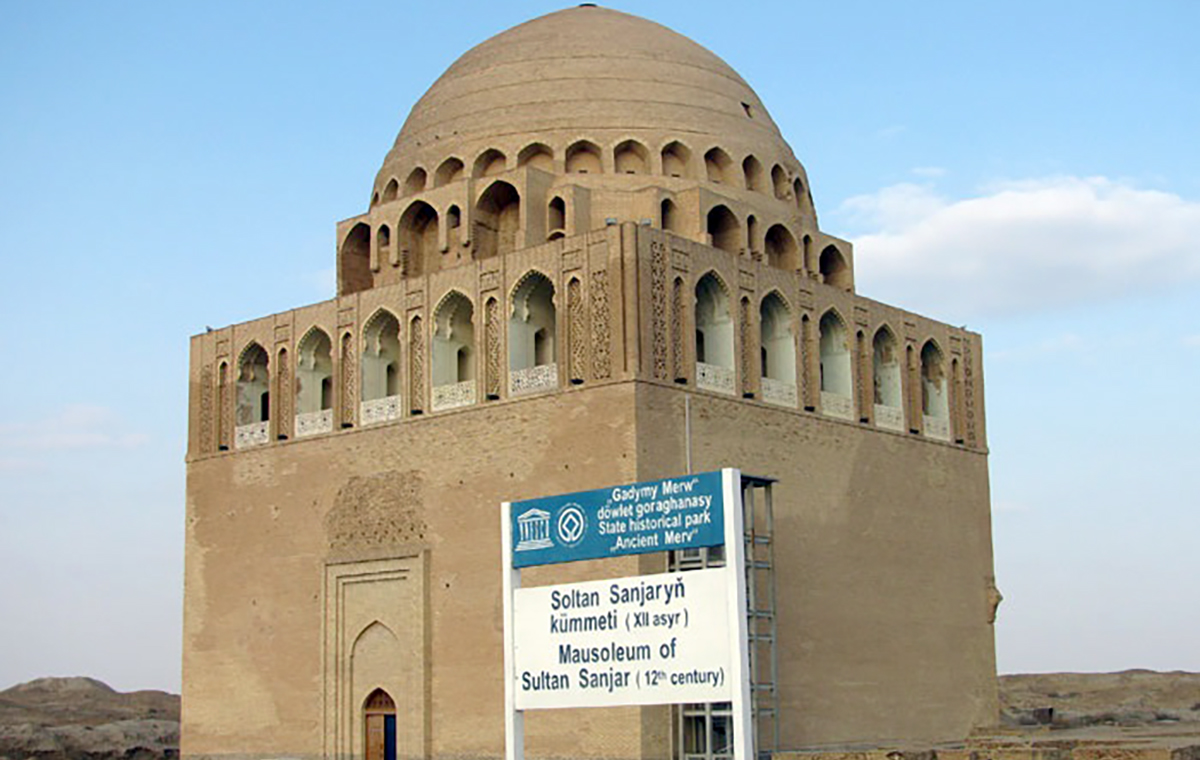The mausoleum of Sultan Sanjar is a unique monument of Turkmen architecture of the 12th century. Sultan Muizz ud-Din Abul-Haris Ahmad Sanjar ibn Malik Shah I was the last of the great rulers of the Seljuk dynasty. Under him, Merv became the capital of the Seljuk empire, and various sciences, culture and art developed in the state. During the reign of the Sultan, Omar Khayyam, a great poet and mathematician, worked at the Merv observatory, and the great historian al-Samani wrote a work in 20 volumes about the history of Merv.
Since childhood, Ahmad was surrounded by symbols of power and wealth. At the age of 12, he took control of the city of Khorasan. At the age of 18, having demonstrated his talent as a military leader, he defeated the army of the Karakhanids.
The inscription in the interior of the mausoleum retained the name of the architect - Muhammad ibn Atsiz al-Serakhsi. The architect was one of the best masters among the Seljuk Turkmens.
The mausoleum was the central part of the ensemble, which also included a palace and a Friday mosque. The existing building is the only one that survived after the destruction of Merv by the Mongols in 1221-22. After the invasion, the ashes of the Sultan were reburied, and under the tombstone of the mausoleum there is now an empty space.
The height of the building, located in the center of the Sultan-Kala settlement, is 38 meters. The thickness of the walls at the base is 5 meters. The building is crowned with a dome, consisting of two thin brick shells (the turquoise outer cladding, unfortunately, has not survived); under it there are through galleries in the form of openwork arches. A similar architectural technique would be used three centuries later in the erection of the vault of the Cathedral of Santa Maria del Fiore in Florence.
The Arabic inscription on the façade of the mausoleum informs that this place was ennobled by the remains of the one who was called Sultan Sanjar, from the descendants of the Seljuk Turks ... At one time he was just like Alexander the Great, he was the patron saint of scientists and poets, and was accepted into the world Islam is in a state of prosperity and happiness thanks to the arts and sciences.
The first information about the mausoleum can be found in the works of medieval authors. The famous Arab traveler, geographer and historian Yakut al-Hamawi, who saw Merv at the beginning of the 13th century, even before the Mongol invasion, wrote about the building as follows: "Above it rises a blue dome, which is visible at a distance of one day's journey."
And today the majestic building is one of the most famous sights of Turkmenistan, which is visited by many pilgrims and tourists.








